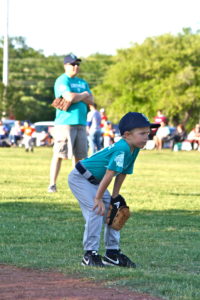Every fall and across the country, thousands of kids of all ages take to the field. On baseball fields, homeruns sail out of the park and outs are made at home plate. On soccer fields, goals are scored past diving goalies and defensive slide tackles save games. On football fields, quarterbacks are sacked on one down and make game-winning touchdown passes on the next.
It’s also on these fields that hundreds of young athletes suffer asthma attacks, heat- and cold-related illnesses, muscle sprains, and broken bones. According to the U.S. Centers for Disease Control, every year more than 3.5 million kids under the age of 14 receive medical treatment for sports injuries and high school athletes account for approximately 2 million injuries, 500,000 doctor visits, and 30,000 hospitalizations. Youth and young adult sports offer wonderful opportunities to those who play, but the danger is real.
 Injuries on the athletic field first crossed my mind about a month ago, when my son “graduated” from tee-ball to actual baseball. I realized after just one practice that this season would be a whole new ball game: the ball flies faster, the kids run harder, the physical contact increased…essentially, the risk of injury increased.
Injuries on the athletic field first crossed my mind about a month ago, when my son “graduated” from tee-ball to actual baseball. I realized after just one practice that this season would be a whole new ball game: the ball flies faster, the kids run harder, the physical contact increased…essentially, the risk of injury increased.
I am CPR and First Aid certified, but my husband – who coaches my son’s team – is not. (Don’t get me started on that one…) So what happens when I’m not there and my son suffers an asthma attack on the field? Or another player falls and breaks his leg? Or a parent in the stands suffers a heart attack?
I honestly think my husband could and would handle a crisis fairly well; he’s a smart guy with a level head, and he grew up with a dad who’s a doctor. But at the end of the day, he’s not CPR or First Aid trained and he should be.
So I did what I always do when I have a question or need information about health, safety, or preparedness…I clicked over to the American Red Cross website. And what you do know – the Red Cross offers a class called First Aid, Health, and Safety for coaches and officials that focuses on the injuries and illnesses most likely to occur on the playing field.
Are you coaching a youth sports team or officiating in a youth sports league this fall? Consider enrolling in First Aid, Health, and Safety – and coupling it with CPR/AED – so that you’ll be prepared should one of your athletes or a spectator falls ill or is injured on the field.
And now, let’s play ball!
To find more information about the American Red Cross Health & Safety classes – including First Aid, Health, and Safety and CPR/AED – offered in your area, click here or contact your local chapter.
